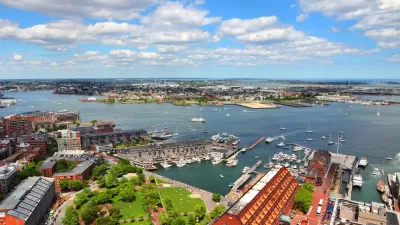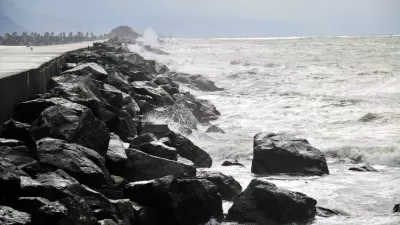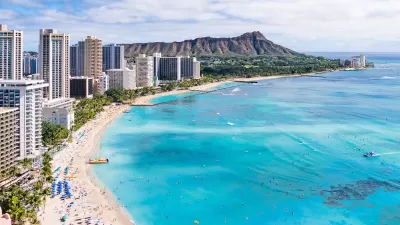The Boston waterfront has been booming, but the area is extremely vulnerable to climate change and rising sea levels. Measures to address those risks have come just recently.

The Seaport District of Boston has seen immense growth in the last decade, with construction of a slew of new office buildings, condominiums, and museums. But the area is prone to flooding, and projections show the problem will only get worse.
Yet developers and the city, eager to see the Seaport District transform, are just now moving to protect buildings from climate change threats. “Developers are elevating ground floors, putting electrical and other critical equipment on higher ones, and investing in salt water-resistant materials and flood barriers to protect garages and other vulnerable areas of buildings. Boston is planning a series of sea walls, berms, and other structures that will act like a barricade against Mother Nature,” write Prashant Gopal and Brian K. Sullivan.
Other cities, including New York and Miami, are also putting flood-protection measures into place. But observers of the Boston waterfront development say that building took precedence over planning for climate change. "No American city has left such a large swath of expensive new oceanfront real estate and infrastructure exposed to the worst the environment has to offer, according to Chuck Watson, owner of Enki Research, which assesses risk for insurers, investors, and governments,” note Gopal and Sullivan.
FULL STORY: Boston Built a New Waterfront Just in Time for the Apocalypse

Study: Maui’s Plan to Convert Vacation Rentals to Long-Term Housing Could Cause Nearly $1 Billion Economic Loss
The plan would reduce visitor accommodation by 25,% resulting in 1,900 jobs lost.

North Texas Transit Leaders Tout Benefits of TOD for Growing Region
At a summit focused on transit-oriented development, policymakers discussed how North Texas’ expanded light rail system can serve as a tool for economic growth.

Why Should We Subsidize Public Transportation?
Many public transit agencies face financial stress due to rising costs, declining fare revenue, and declining subsidies. Transit advocates must provide a strong business case for increasing public transit funding.

How to Make US Trains Faster
Changes to boarding platforms and a switch to electric trains could improve U.S. passenger rail service without the added cost of high-speed rail.

Columbia’s Revitalized ‘Loop’ Is a Hub for Local Entrepreneurs
A focus on small businesses is helping a commercial corridor in Columbia, Missouri thrive.

Invasive Insect Threatens Minnesota’s Ash Forests
The Emerald Ash Borer is a rapidly spreading invasive pest threatening Minnesota’s ash trees, and homeowners are encouraged to plant diverse replacement species, avoid moving ash firewood, and monitor for signs of infestation.
Urban Design for Planners 1: Software Tools
This six-course series explores essential urban design concepts using open source software and equips planners with the tools they need to participate fully in the urban design process.
Planning for Universal Design
Learn the tools for implementing Universal Design in planning regulations.
Ascent Environmental
Borough of Carlisle
Institute for Housing and Urban Development Studies (IHS)
City of Grandview
Harvard GSD Executive Education
Toledo-Lucas County Plan Commissions
Salt Lake City
NYU Wagner Graduate School of Public Service





























